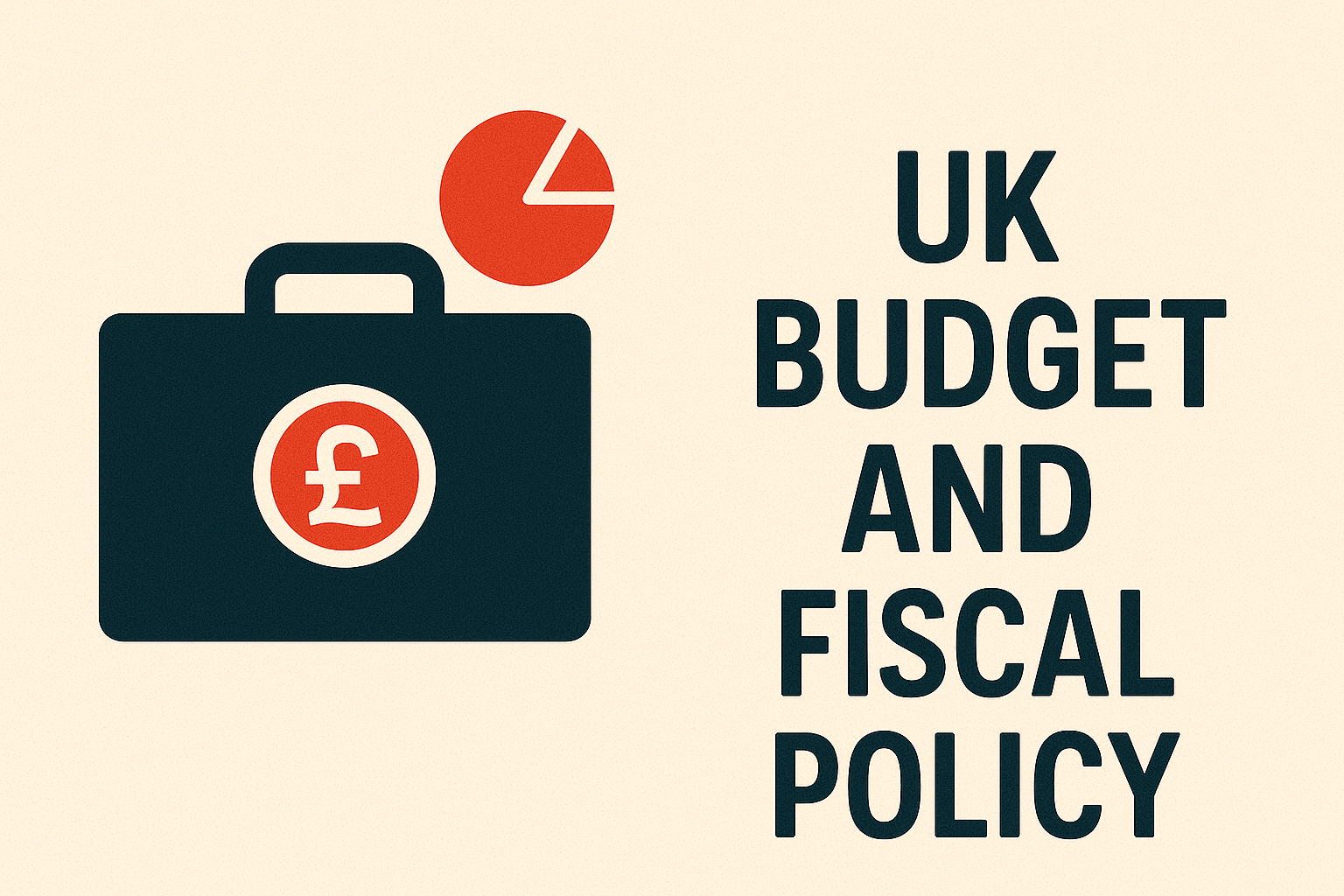Your cart is currently empty!
UK Budget and Fiscal Policy: Government Spending, Taxation

In today’s post-pandemic and high-inflation era, the UK budget and fiscal policy has taken centre stage in shaping the country’s economic resilience and growth prospects. As the founder of RajeevPrakash.com, I’ve observed a growing need to break down complex policy shifts in a way that’s understandable, especially for entrepreneurs, small business owners, and individual taxpayers.
Fiscal policy—government decisions on spending and taxation—is not just an abstract economic lever. It directly impacts the cash flow of businesses, consumer demand, inflation levels, employment opportunities, and overall market confidence. Whether you’re running a tech start-up in Manchester, a retail chain in London, or a supply business in Birmingham, fiscal measures shape your operating environment.
This article offers a UK-specific deep dive into recent budgetary changes, the government’s evolving fiscal strategy, and the ripple effects for businesses across sectors.
What Is Fiscal Policy?
Fiscal policy refers to how the government uses spending and taxation to influence the economy. In the UK, fiscal policy is crafted by the Chancellor of the Exchequer through the annual Budget and other financial statements. The objective is to balance economic growth, manage inflation, and ensure public finances remain sustainable.
There are two main types of fiscal policy:
- Expansionary fiscal policy: Increased government spending and/or tax cuts to stimulate economic activity.
- Contractionary fiscal policy: Reduced spending and/or higher taxes to cool down an overheated economy or reduce deficits.
Key Highlights from Recent UK Budget Announcements
1. Corporate Tax Adjustments
The increase in the main corporation tax rate to 25% for businesses earning over £250,000 per year has sparked intense debate. While it aims to strengthen public revenues, it has also raised concerns about the UK’s global competitiveness.
Small and medium enterprises (SMEs) with profits below £50,000 still benefit from the 19% small profits rate, but businesses in the mid-tier band face gradual tax burdens.
For growing businesses, this creates a balancing act—expansion must now be paired with tighter financial planning to absorb higher tax costs.
2. Capital Allowances and Business Investment
To offset the rise in corporation tax, the UK government introduced full expensing—a measure allowing businesses to deduct 100% of the cost of qualifying plant and machinery investments from their profits. This policy is designed to encourage innovation and capital investment.
Businesses in manufacturing, technology, logistics, and green energy sectors stand to benefit significantly. However, service-based firms and small-scale retailers may see limited impact unless further incentives are introduced.
3. National Insurance and Labour Costs
The increase in National Insurance Contributions (NICs) in recent years has added to employment costs, especially for labour-intensive sectors. Although some temporary reliefs have been introduced, the long-term trajectory points to higher employment-related expenses.
As wage inflation continues and hiring remains competitive, businesses are facing pressure to increase pay while simultaneously managing overheads—adding complexity to workforce planning.
Government Spending: Where the Money Is Going
UK public spending is increasingly focused on:
- Healthcare and the NHS
- Education and skills development
- Green transition and net-zero initiatives
- Defence and national security
- Cost-of-living support programs
While these priorities aim to build long-term resilience, the short-term impact on businesses is mixed. For example, increased NHS funding indirectly supports healthcare providers and medical supply firms. Investments in renewable infrastructure open new opportunities in energy, transport, and construction sectors.
However, fiscal space remains limited. Government borrowing has surged in recent years, and future spending will likely be constrained unless revenues rise or debt is reduced. This reality casts uncertainty over future support schemes or stimulus packages for businesses.
Taxation Policy: Navigating the Shifts
Apart from corporation tax, other areas of concern for businesses include:
- Business Rates: Despite temporary reliefs for retail, hospitality, and leisure sectors, long-term reform remains slow. Many businesses are still waiting for a modernisation of the system that reflects online and hybrid commerce.
- VAT Thresholds: The £85,000 VAT registration threshold remains unchanged, but discussions are ongoing regarding how this impacts small businesses and self-employed individuals.
- Dividend Tax and Personal Allowance Adjustments: These affect owner-managers and freelancers directly, prompting reconsideration of business structures and salary/dividend mixes.
Implications for UK Businesses
A. Strategic Planning Becomes Crucial
Given the shifting tax environment and tighter fiscal space, UK businesses must focus on long-term strategic planning. This includes scenario forecasting, cost controls, tax efficiency, and proactive investment decisions.
B. Innovation and Capital Spending Encouraged
The emphasis on capital allowances, R&D incentives, and digital infrastructure shows that innovation-focused firms will be favoured. Businesses that invest in productivity tools, automation, and green technologies stand to benefit.
C. Talent Retention Requires Balance
With rising NICs and minimum wage requirements, retaining skilled labour will require balancing competitive salaries with overall profitability. Upskilling existing employees and flexible benefits may offer better returns than rapid expansion.
How Fiscal Policy Intersects with Inflation, Growth, and Living Costs
Fiscal policy does not exist in isolation—it is tightly interwoven with monetary policy and the broader economic outlook. For example:
- High government spending can fuel inflation if not offset by productivity or higher taxes. Learn more about how interest rates and inflation interact with fiscal policy in our detailed guide:
👉 Inflation and Interest Rates: Understanding the Bank of England’s Policy - A tax-heavy environment during slow growth periods risks pushing the economy toward stagnation or recession. For a complete analysis of UK GDP forecasts and economic risks:
👉 Recession Risk and Economic Growth in the UK: What Lies Ahead - Fiscal decisions directly impact consumer spending, especially when it comes to cost-of-living pressures. Rising taxation without support mechanisms can worsen affordability for households. Read more on this here:
👉 Cost of Living Crisis in the UK: How Prices Are Rising
Conclusion: Balancing Stability with Support
The UK budget and fiscal policy in 2025 reflects a government striving to balance economic stability, public service funding, and deficit control. However, the margin for error is slim. For businesses, this means adapting quickly, investing wisely, and staying informed.
Whether you’re planning your tax obligations, considering capital investments, or reviewing employee costs, staying ahead of fiscal changes is no longer optional—it’s essential.
At RajeevPrakash.com, we remain committed to offering business-focused insights that help you navigate complex policy shifts with clarity and confidence.

Mr. Rajeev Prakash
Rajeev is a well-known astrologer based in central India who has a deep understanding of both personal and mundane astrology. His team has been closely monitoring the movements of various global financial markets, including equities, precious metals, currency pairs, yields, and treasury bonds.
